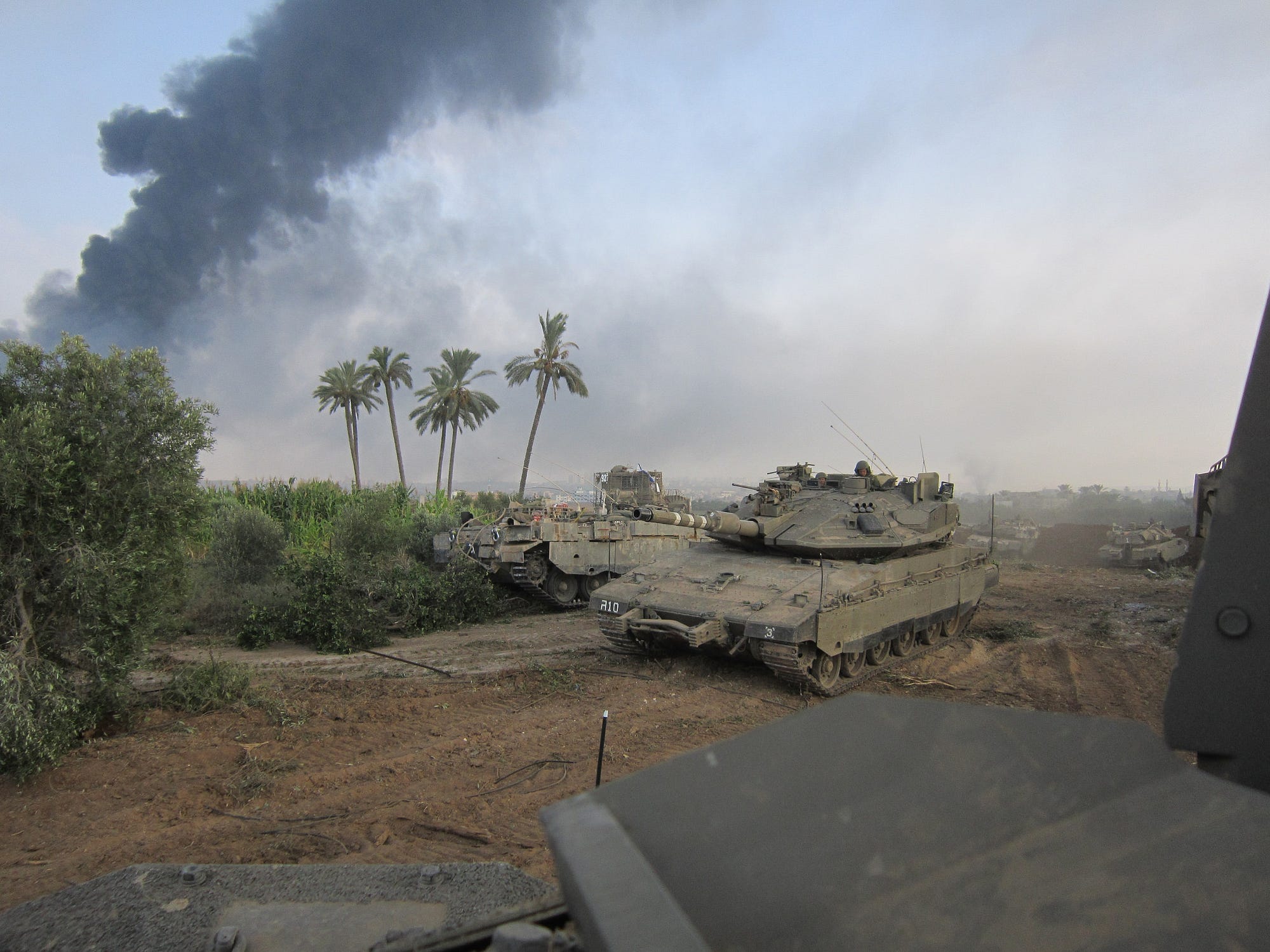The Israeli military is pretty secretive about revealing the units it deploys to war. Given Israel’s location and history, the country has to position its army in a way to fight off immediate, simultaneous threats from different directions.
But it’s not impossible to figure out what the Israel Defense Forces have sent to Gaza. Former intelligence analyst Matthew Aid and the pseudonymous blogger Corporal Frisk looked through casualty reports and the bits of information the IDF has released.
Not surprisingly—and which has been graphically demonstrated during the past two weeks—the Israeli invasion represents a huge deployment of the IDF’s ground combat power.
The IDF has committed its largest and heaviest ground unit, the 36th Rage Armored Division, into the fight. The 36th Division formerly was based in the Golan Heights near the Syrian border. The division’s three armored brigades—the 7th, 401st and 188th—all are in Gaza.
There also are at least three regular infantry brigades operating in Gaza. The 84th Givati Brigade, the Nahal Infantry Brigade and the 1st Golani Brigade.
Only the 84th Brigade is normally based in southern Israel—it also carries out amphibious operations, like the U.S. Marines. The IDF pulled the 1st Golani Brigade from its base in northern Israel. The Nahal Brigade normally is based near Jerusalem.
In addition, the IDF’s 35th Parachute Brigade and two Gaza Territorial Brigades are involved. This is in addition to a large—although highly secretive—number of commandos. The IDF also has called up a total of86,000 reservists.
The Golan Heights isn’t undefended. In the 36th Divison’s place, Israel created a new unit called the 210th Regional Bashan Division. According toDefense News, this unit used to be a reserve division. But the IDF upgraded it with new broadband command and control systems and put it in charge of defending the Heights while the 36th Armored shifted to becoming Israel’s all-purpose, go-anywhere war machine.
Even then, Hamas has inflicted heavy losses on the highly casualty-averse Israeli army. As of Aug. 1, at least 63 Israeli soldiers and nearly 1,500 Palestinians have died.
“Needless to say, all of the units listed above are among the best combat units in the Israeli Army,” Aid observed. “The fact that all of these elite units were pulled out of northern and central Israel and are now operating in the Gaza Strip says a lot about how important this operation is to the Israelis.”

Hezbollah is sitting this one out
The deployment leaves Israel’s north somewhat vulnerable. Understandably, Hamas has urged Hezbollah to open a second front against Israel. “We hope the Lebanese front will open and together we will fightagainst this formation,” Hamas deputy political chief Abu Marzouk told RIA Novosti.
Not only are Hezbollah’s troops better equipped and have significantly larger rocket stockpiles than Hamas, the Iran-backed militia has all of southern Lebanon to fight from. This gives it space to maneuver, retreat and lay ambushes against advancing Israeli armor. Its rockets also are numerous and deadly enough to force the evacuations of northern Israeli towns, as happened during the 2006 war with Israel.
But Israel could be reckoning that Hezbollah won’t be in any hurry to come to Hamas’s aid. There’s no way Hezbollah can afford to do that as long as it’s fighting in Syria.
Right now, Hezbollah is bogged down in fierce warfare against the Al Qaida-affiliated Nusrah Front in the mountainous borderlands of Lebanon and Syria. Hezbollah currently is starving out rebels in the Syrian province of Qalamoun, and launched a new offensive with the Lebanese army this week towards the town of Arsal inside Lebanon.
There’s a caveat here. Israel is sending its crack troops—and lots of them—right into Gaza. But lots of destructive firepower doesn’t equal a strategy. To put it into perspective, the IDF is using heavy armor brigades backed by artillery, naval and air power in one of the world’s densest urban environments. But the ostensible goal is much more narrowly tailored. To destroy tunnels used by lightly-armed insurgents.
Let’s face it. Israel is way overdoing it. But Israel also is improvising, noted political scientist Erica Chenoweth at the blog Political Violence at a Glance.
“Evaluating whether the operation’s short-term success leads to longer term peace and stability is not part of the [IDF’s] process at all,” Chenoweth blogged. “There is very little reflection, therefore, on whether actions like Operation Protective Edge ultimately make Israelis safer or not.”
No comments:
Post a Comment